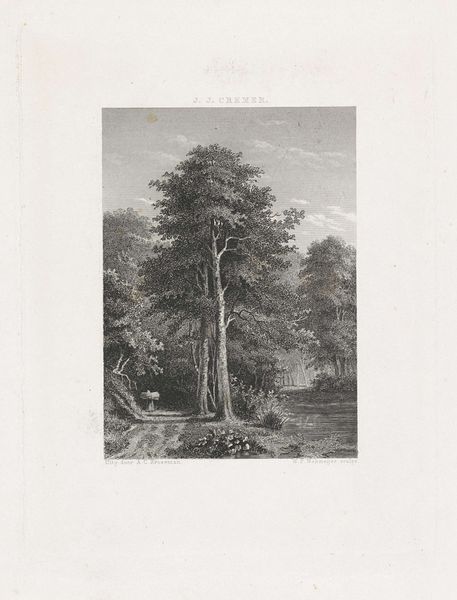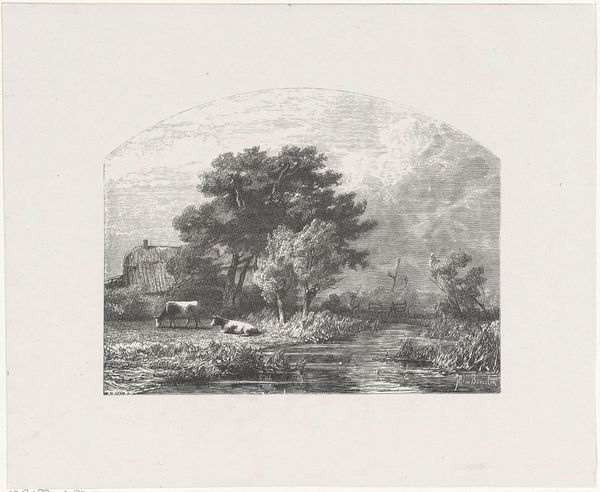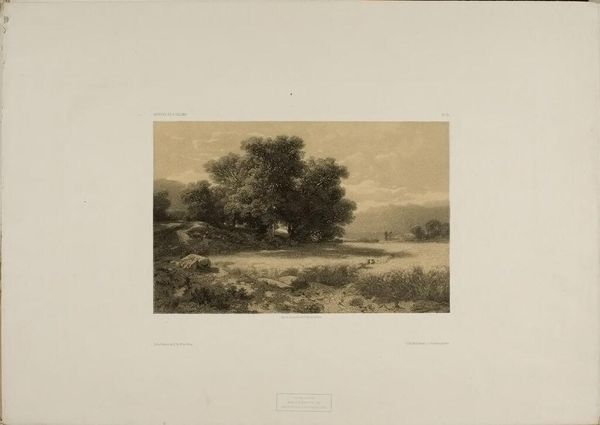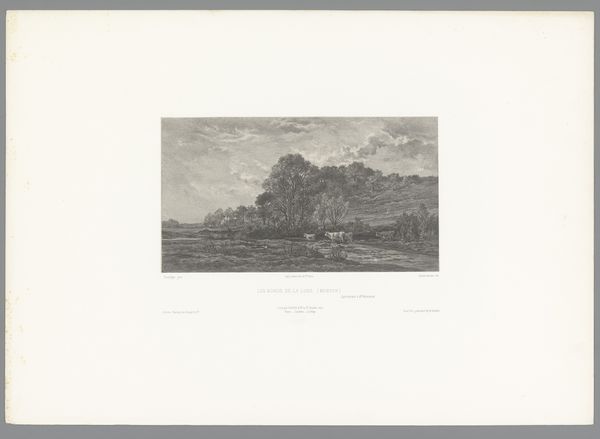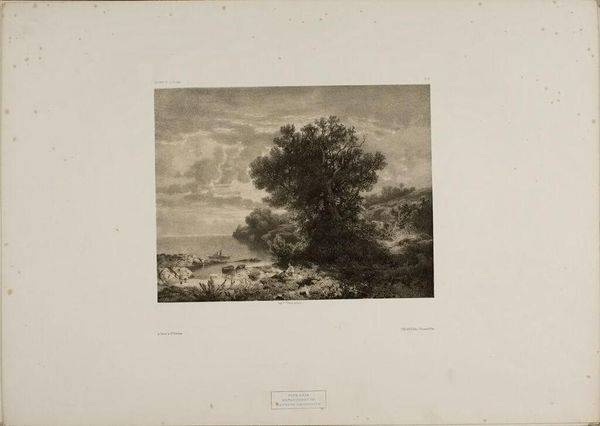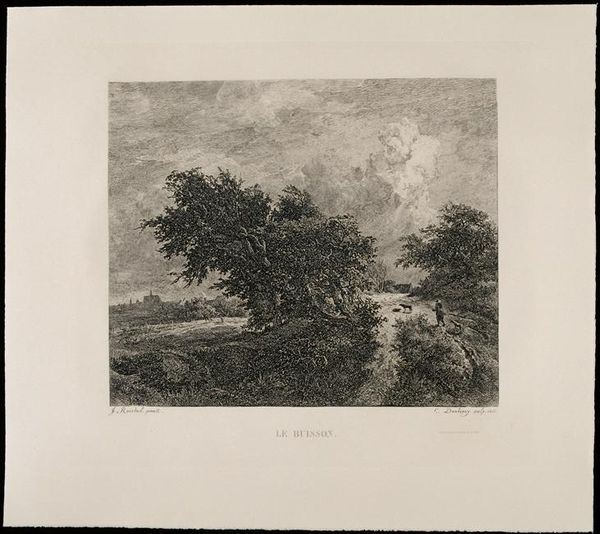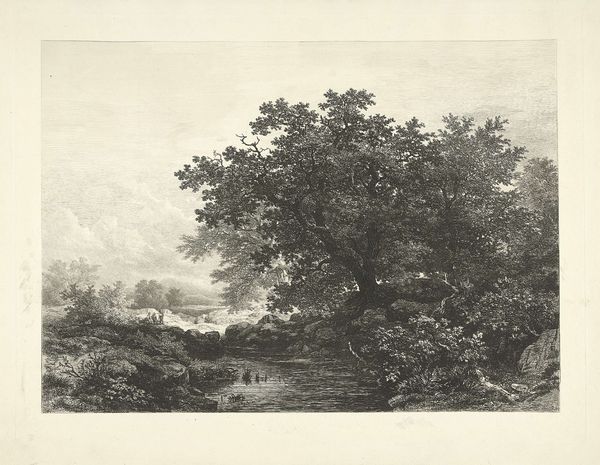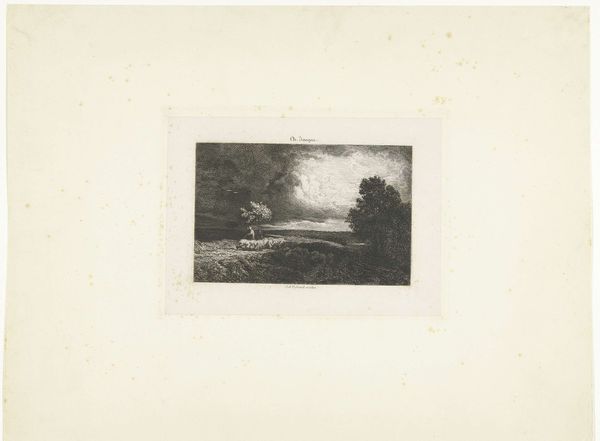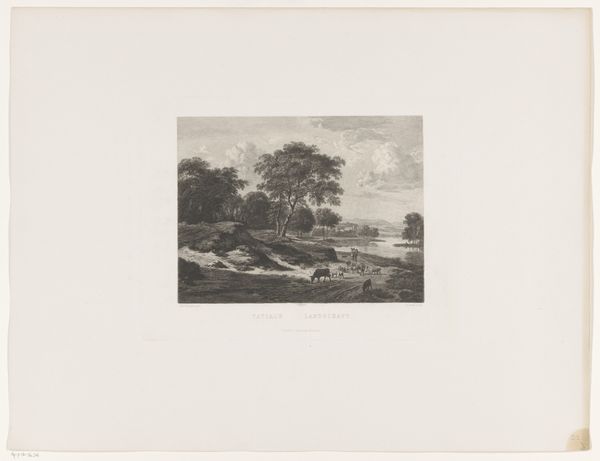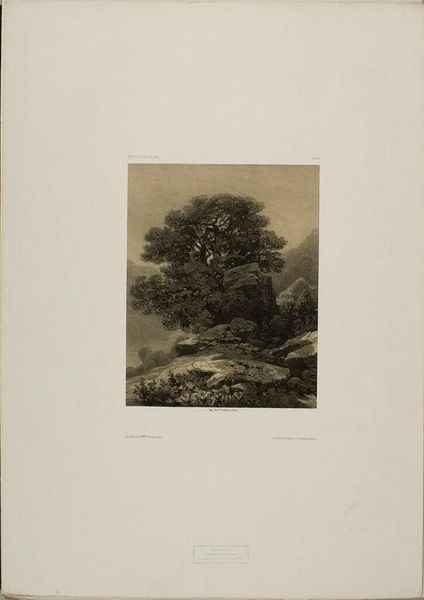
drawing, print, etching
#
drawing
# print
#
etching
#
landscape
#
realism
Dimensions: height 334 mm, width 502 mm
Copyright: Rijks Museum: Open Domain
This is a landscape near Vorden by M. Weber, made using etching, a printmaking technique that dates back centuries. Here, the artist would have coated a metal plate with a waxy, acid-resistant substance, then scratched the image into that coating. The plate was then submerged in acid, which bit into the exposed metal, creating incised lines. Ink was applied to the plate, filling these lines, and the surface wiped clean. Finally, the plate was pressed onto paper, transferring the image. The result has a distinctive, linear quality. The technique lends itself well to detailed and atmospheric depictions of the natural world, like this one, which captures the quiet beauty of the Dutch countryside. Etching allowed for the relatively easy reproduction of images, making art more accessible to a wider audience, and reflecting the shift towards mass production and consumption in society. The appeal of etching lies in its unique blend of artistic skill and mechanical reproduction. It’s a reminder that even seemingly traditional art forms are deeply intertwined with social and economic forces.
Comments
No comments
Be the first to comment and join the conversation on the ultimate creative platform.
